2026 Prime Time Calendar for Canadian Rockies Photography
For more than twenty years, I’ve explored and photographed the Canadian Rockies, learning their rhythms and seasonal shifts. As more photographers discovered my work, I kept getting the same questions about seasonal conditions. It became clear that people needed a simple, visual guide. This calendar is my answer—an informed, experience-based look at the Rockies’ key natural moments and transitions.
Scroll down or skip to…
Disclaimer: The mountains are incredibly enticing, but they are fraught with hazards and have the power to cause serious harm, or worse. Make sure you do your homework prior to exploring and read up on the wildlife, weather, avalanche, rockfall, exposure, and any other threats or hazards so you are as prepared as possible. It is up to the users of this calendar to acquire the necessary skills and knowledge and to exercise caution when venturing out into mountainous terrain. The author accepts no responsibility for any consequences, injuries or damages that arise from your use of the information in this calendar.
January 2026
Best for: pristine winter scenes, ice caves, methane bubbles, low-angle light.
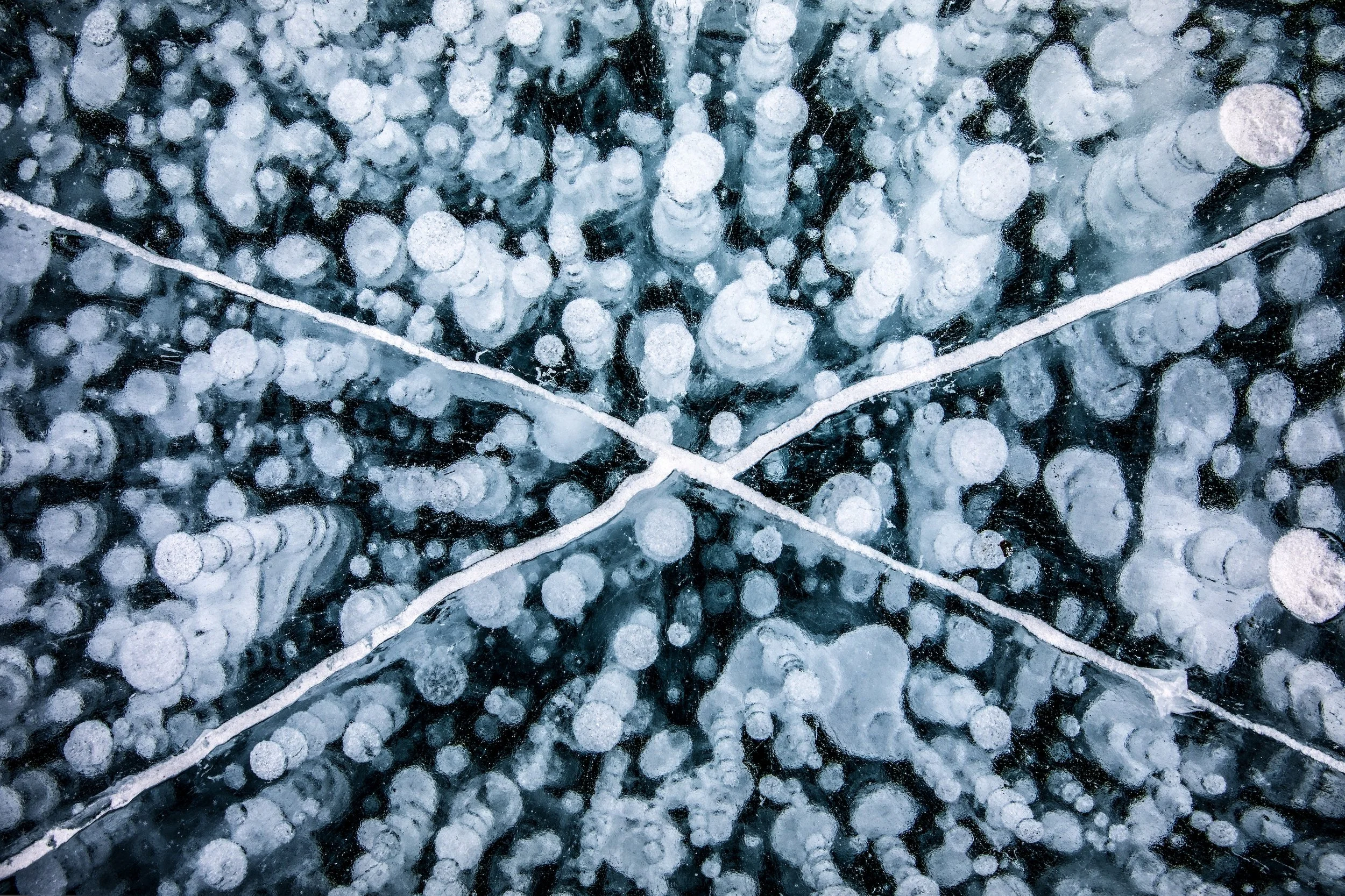
Sunrise
(1st of month - last day)
8:46 am - 8:20 am
Sunset
(1st of month - last day)
4:46 pm - 5:31 pm
Average Rainfall
(mm)
2.9
Average Snowfall
(cm)
38.2
Average Temp.
(High/Low - ºC)
-5/-15
Cloud Cover
65%
Mark your calendar:
January 1 - New Year’s Day
January 3 - Full Moon 🌕 (Supermoon)
January 16 - Mars will be visible all night long.
January 29 - New Moon 🌑
February 2026
Best for: quiet season, skiing and snowshoeing, pristine winter scenes, ice caves.
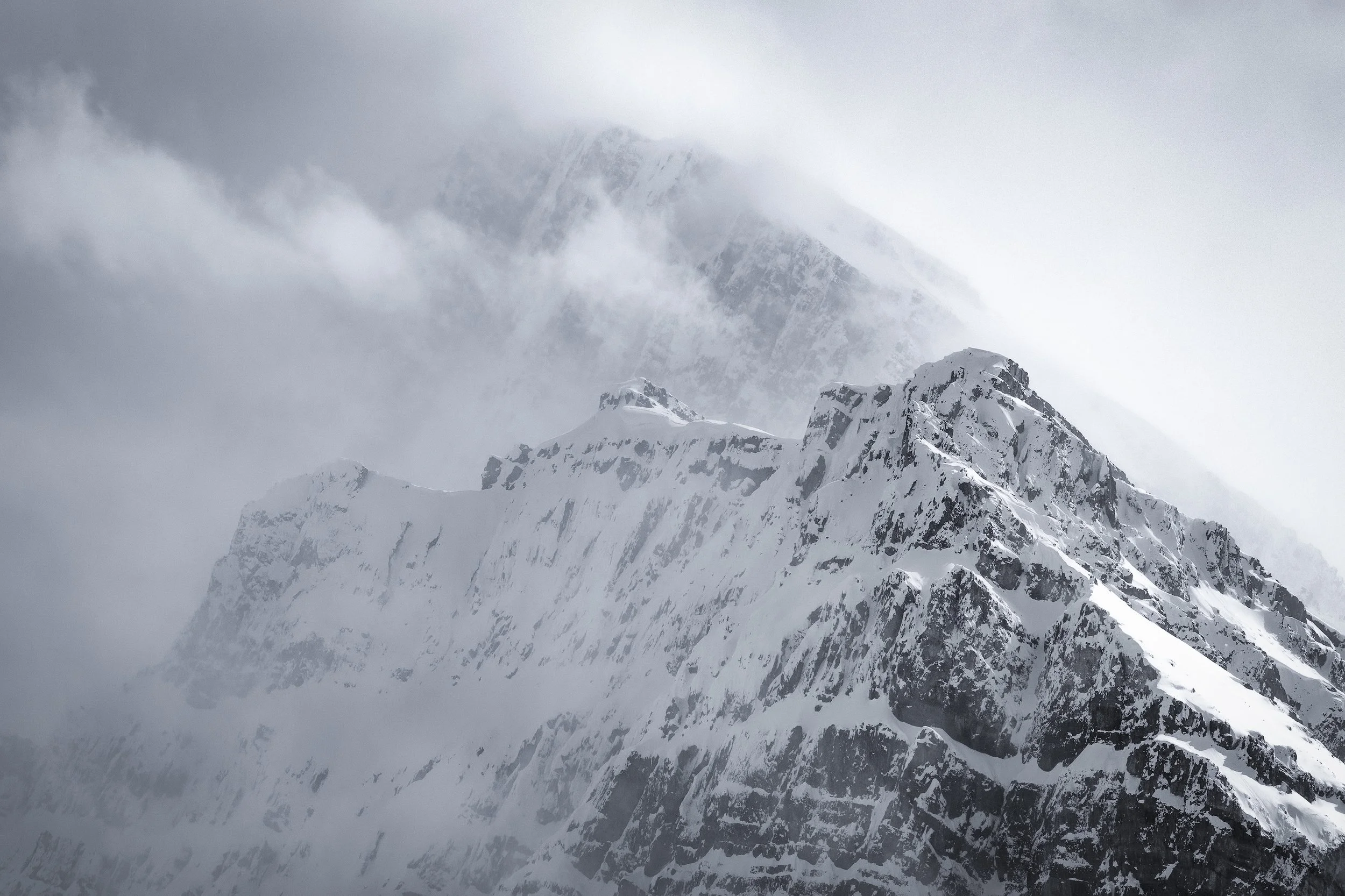
Sunrise
(1st of month - last day)
8:19 am - 7:28 am
Sunset
(1st of month - last day)
5:33 pm - 6:22 pm
Average Rainfall
(mm)
1.7
Average Snowfall
(cm)
30.0
Average Temp.
(High/Low - ºC)
0/-11
Cloud Cover
65%
Mark your calendar:
February 16 - Family Day
February 1 - Full Moon 🌕
February 17 - New Moon 🌑
March 2026
Best for: skiing and snowshoeing, ice caves, aurora activity.
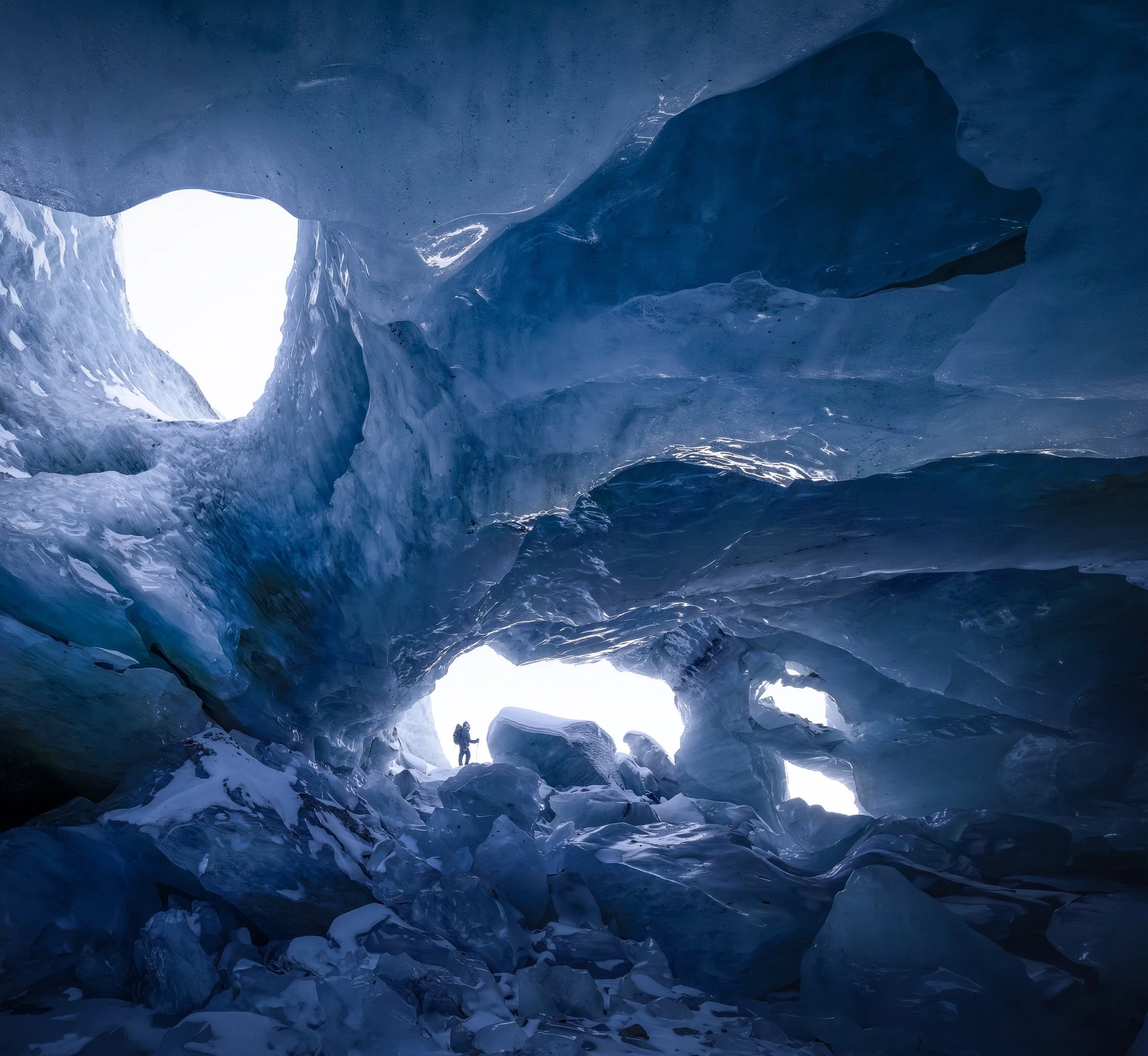
Sunrise
(1st of month - last day)
7:26 am - 7:20 am
Sunset
(1st of month - last day)
6:24 pm - 8:14 pm
Average Rainfall
(mm)
1.6
Average Snowfall
(cm)
27.0
Average Temp.
(High/Low - ºC)
4/-8
Cloud Cover
66%
Mark your calendar:
March 3 - Full Moon 🌕
March 8 - Clocks go forward one hour at 2:00 am MT
March 12-24 - Milky Way season
March 18 - New Moon 🌑
March 20 - Spring Equinox
April 2026
Best for: a quieter experience/affordability, variety (spring and winter-like scenes available depending on location).

Sunrise
(1st of month - last day)
7:17 am - 6:17 am
Sunset
(1st of month - last day)
8:16 pm - 9:03 pm
Average Rainfall
(mm)
10.6
Average Snowfall
(cm)
26.3
Average Temp.
(High/Low - ºC)
9/-3
Cloud Cover
63%
Mark your calendar:
April 1 - Full Moon 🌕
April 11-21 - Milky Way season
April 21-22 - Peak of Lyrids meteor shower
April 3 - Good Friday
April 5 - Easter Sunday
April 17 - New Moon 🌑
May 2026
Best for: Milky Way, the return of open water, early hiking, bear sightings, variety (spring and winter-like scenes available depending on location).

Sunrise
(1st of month - last day)
6:15 am - 5:33 am
Sunset
(1st of month - last day)
9:05 pm - 9:48 pm
Average Rainfall
(mm)
42.4
Average Snowfall
(cm)
17.1
Average Temp.
(High/Low - ºC)
14/2
Cloud Cover
60%
Mark your calendar:
May 1 - Full Moon 🌕
May 12-20 - Milky Way season
May 16 - New Moon 🌑
May 18 - Victoria Day
May 31 - Full Moon 🌕
June 2026
Best for: waterfalls (higher flow), noctilucent clouds, storms/dramatic weather, vibrant vegetation, long full days.
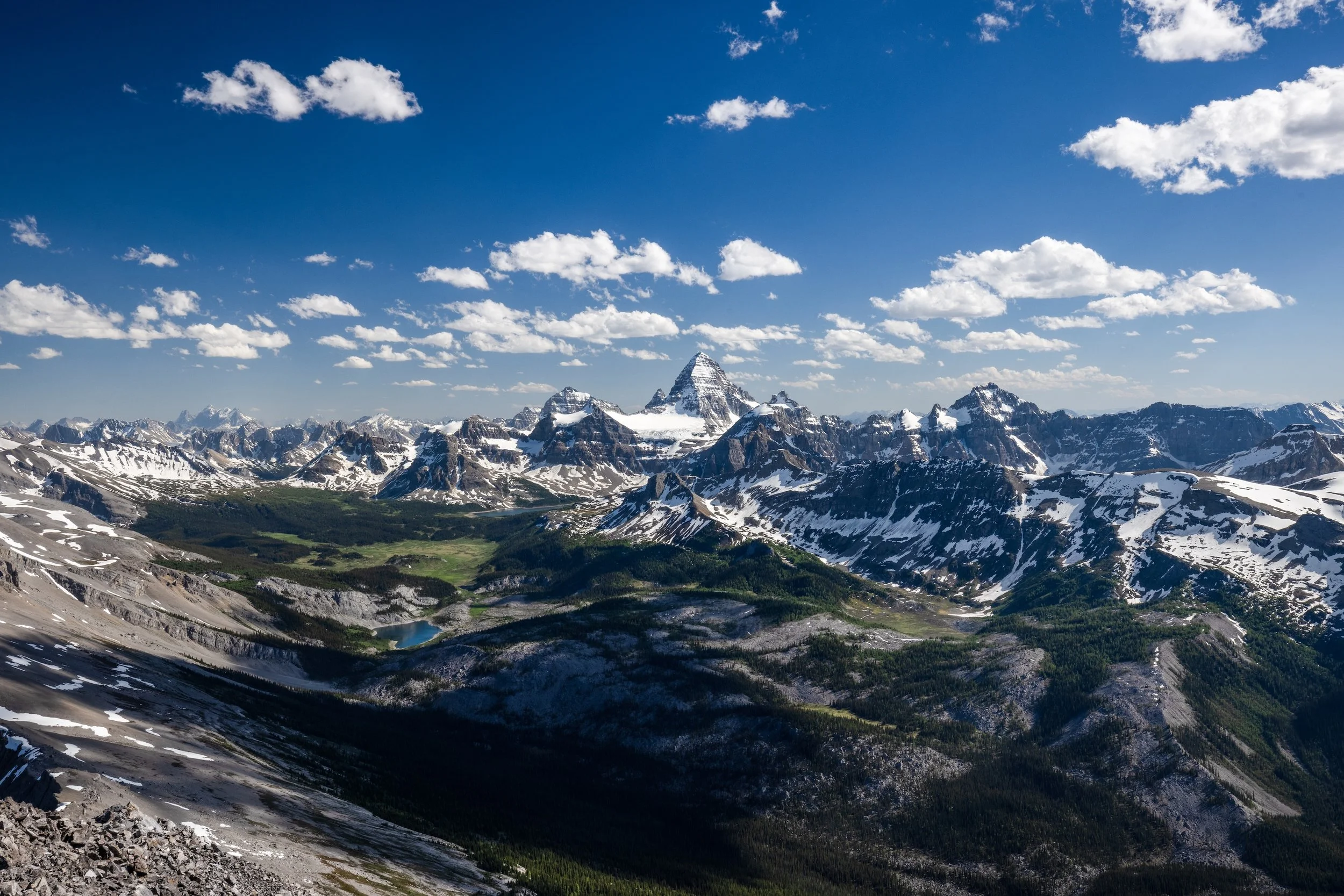
Sunrise
(1st of month - last day)
5:32 am - 5:31 am
Sunset
(1st of month - last day)
9:49 pm - 10:01 pm
Average Rainfall
(mm)
58.4
Average Snowfall
(cm)
1.7
Average Temp.
(High/Low - ºC)
19/5
Cloud Cover
56%
Mark your calendar:
June 14 - New Moon 🌑
June 29 - Full Moon 🌕
July 2026
Best for: noctilucent clouds, storms/dramatic weather, hiking/backpacking/camping, wildflowers.
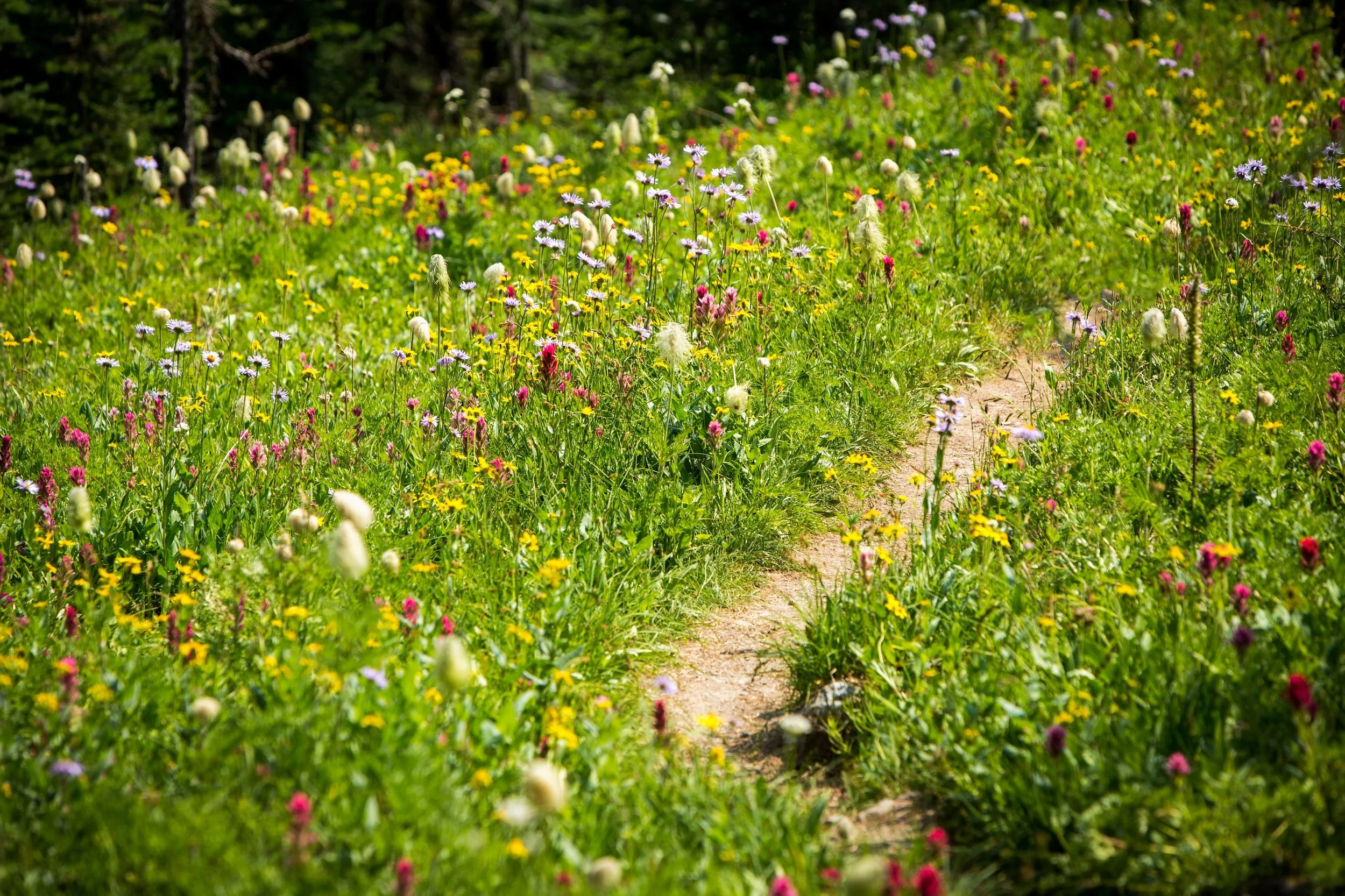
Sunrise
(1st of month - last day)
5:31 am - 6:06 am
Sunset
(1st of month - last day)
10:01 pm - 9:30 pm
Average Rainfall
(mm)
51.1
Average Snowfall
(cm)
0
Average Temp.
(High/Low - ºC)
22/7
Cloud Cover
41%
Mark your calendar:
July 1 - Canada Day
July 14 - New Moon 🌑
July 29 - Full Moon 🌕
August 2026
Best for: hiking/backpacking/camping, wildflowers, Milky Way, high-elevation adventures, clear nights.

Sunrise
(1st of month - last day)
6:08 am - 6:54 am
Sunset
(1st of month - last day)
9:29 pm - 8:30 pm
Average Rainfall
(mm)
51.2
Average Snowfall
(cm)
0
Average Temp.
(High/Low - ºC)
22/7
Cloud Cover
42%
Mark your calendar:
August 3 - Civic Holiday
August 12 - New Moon 🌑
August 12-14 - Peak of Perseids meteor shower
August 9-17 - Milky Way season
August 28 - Full Moon 🌕
September 2026
Best for: hiking/backpacking/camping, fall colours, aurora activity, Milky Way, variety, clear nights.
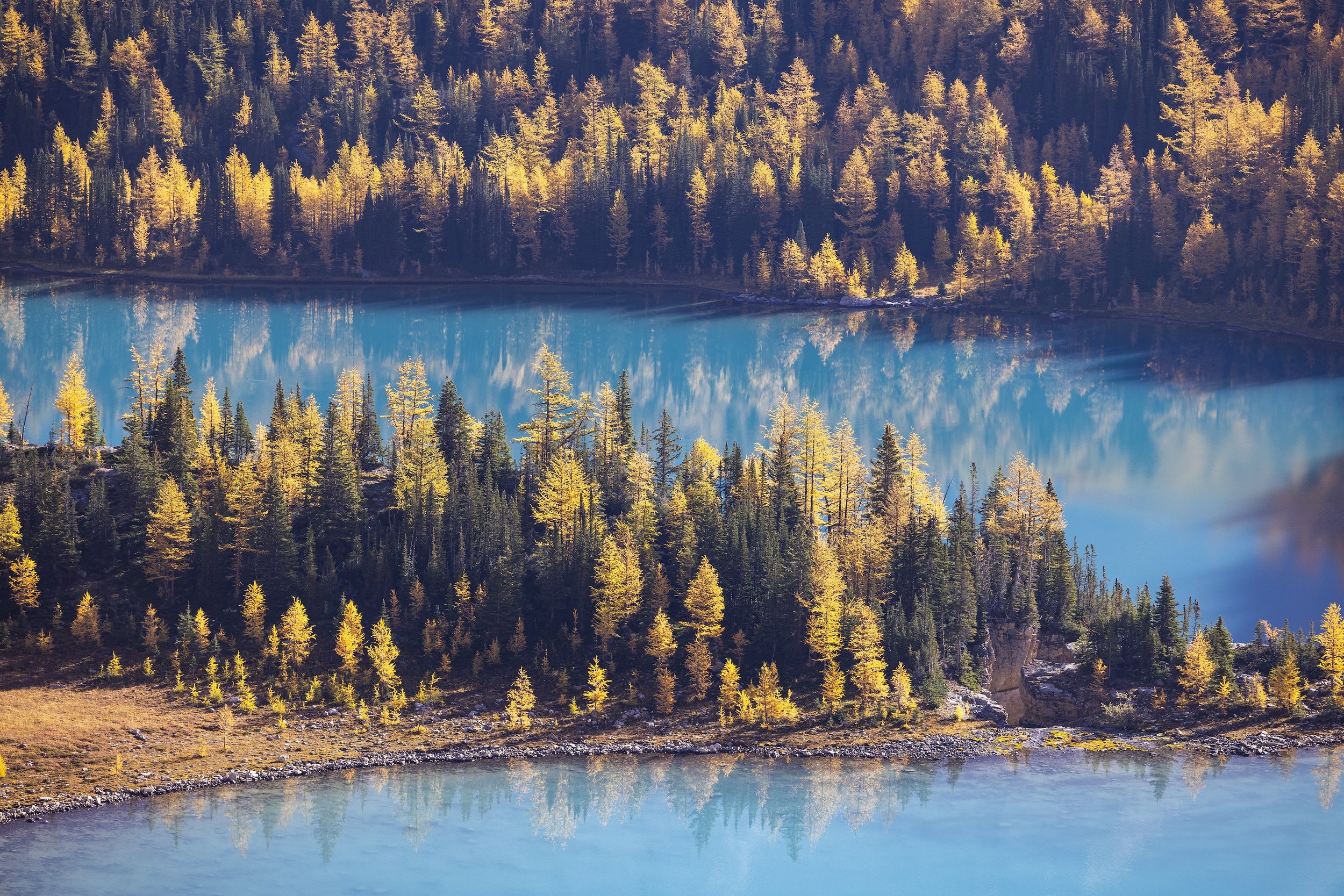
Sunrise
(1st of month - last day)
6:56 am - 7:41 am
Sunset
(1st of month - last day)
8:28 pm - 7:22 pm
Average Rainfall
(mm)
37.7
Average Snowfall
(cm)
7.0
Average Temp.
(High/Low - ºC)
16/3
Cloud Cover
48%
Mark your calendar:
September 7 - Labour Day
September 10 - New Moon 🌑
September 7-15 - Milky Way season
September 26 - Full Moon 🌕
September 30 - National Day for Truth and Reconciliation
October 2026
Best for: hiking/backpacking/camping, fall colours, aurora activity, Milky Way, variety, clear nights.

Sunrise
(1st of month - last day)
7:43 am - 8:34 am
Sunset
(1st of month - last day)
7:20 pm - 6:18 pm
Average Rainfall
(mm)
15.4
Average Snowfall
(cm)
18.9
Average Temp.
(High/Low - ºC)
10/-1
Cloud Cover
54%
Mark your calendar:
October 9 - New Moon 🌑
October 12 - Thanksgiving
October 24 - Full Moon 🌕
November 2026
Best for: ice caves, a quieter experience/affordability, ice formations, variety, pristine lake ice, colourful sunrises and sunsets.

Sunrise
(1st of month - last day)
7:43 am - 8:34 am
Sunset
(1st of month - last day)
7:20 pm - 6:18 pm
Average Rainfall
(mm)
15.4
Average Snowfall
(cm)
18.9
Average Temp.
(High/Low - ºC)
10/-1
Cloud Cover
54%
Mark your calendar:
November 1 - Clocks go back one hour at 2:00 am MT
November 9 - New Moon 🌑
November 11 - Remembrance Day
November 24 - Full Moon 🌕 (Supermoon)
December 2026
Best for: ice caves, methane bubbles, low-angle light, pristine lake ice.

Sunrise
(1st of month - last day)
8:24 am - 8:46 am
Sunset
(1st of month - last day)
4:38 pm - 4:45 pm
Average Rainfall
(mm)
2.8
Average Snowfall
(cm)
43.9
Average Temp.
(High/Low - ºC)
-5/-14
Cloud Cover
63%
Mark your calendar:
December 8 - New Moon 🌑
December 13-14 - Peak of Geminids meteor shower
December 23 - Full Moon 🌕 (Supermoon)
December 25 - Christmas Day
Special Seasonal Events
Methane Bubble Season
Oct 15 - Nov 30 Methane
Dec 1 - Feb 15 Methane Peak
Feb 16 - Mar 15 Methane
Lyall’s Larch Fall Colours
Sep 15 - 25 Lyall
Sep 26 - 30 Lyall Peak
Oct 1 - 7 Lyall
Western Larch Fall Colours
Oct 10 to 30 Western Larch
Aspen Fall Colours
Sep 20 - Sep 24 Aspen
Sep 25 - Oct 5 Aspen Peak
Oct 6 - Oct 15 Aspen
Meteor Showers
Lyrids Meteor Shower
April 14 - 24 (Peak April 21-22)
Perseids Meteor Shower
July 17 - August 24 (Peak August 12-14)
Geminids Meteor Shower
November 19 - December 16 (Peak December 13-14)
Aurora Activity
March 7 to 20,
Sept 1 to 14 and
Oct 1 to 10
Wildflower Season
July 5 - July 19 Wildflower
July 20 - Aug 10 Wildflower Peak
Aug 11 - Aug 20 Wildflower
Milky Way Season
Best windows to shoot it in 2026:
March 12-24
April 11-21
May 12-20
August 9-17
September 7-15
Paul’s Favourite Times of Year
Aug 15 to 30,
Sept 15 to Oct 5,
Nov 1 to 15
Solstice/Equinox
March 20 - Spring Equinox
June 21 - Summer Solstice
September 22 - Fall Equinox
December 21 - Winter Solstice
General Notes
Leave No Trace
Let’s all create in a way that is sustainable so that future generations can enjoy the same feeling of discovery and wildness we do now. I encourage you to join me in adhering as much as possible to the principles of “Leave No Trace” during your time in the Canadian Rockies and other wildlands.
According to Leave No Trace Canada, these principles are:
Plan ahead and prepare
Travel and camp on durable surfaces wherever possible
Dispose of waste properly
Leave what you find
Minimize campfire impacts
Respect wildlife
Be considerate of other visitors
For more details about each of these principles, visit LeaveNoTrace.ca.
Ice and Snow
The highest alpine lakes, as well as some higher road-accessible lakes like Moraine Lake, are often frozen by late October. Most roadside lakes start to freeze in early November and are completely ice-covered by the end of that month. Larger, wind-prone lakes like Abraham and Minnewanka often do not fully freeze until January and Waterton Lakes often don’t freeze over at all. Waterfalls usually turn to ice in early November at higher elevations and shady aspects. There are very few waterfalls still flowing by Christmas.
Low elevation lakes start thawing around mid-May and the higher ones (the lakes lining the Icefields Parkway for example) shed their last ice around mid-June. The highest alpine lakes can stay ice-covered well into July.
Although the mountaintops (and even most valley bottoms) can receive snow during any month of the year, the Rockies tend to get their first significant snowfall high up in late September or early October. By mid-November, valleys will be holding snow until springtime.
Wildfires
Over the past few years, we have unfortunately experienced a fire season here in the Rockies. The resulting smoke can make photography rather challenging for prolonged periods of time, which is why I felt I should mention the issue here. Based on the last 10 years or so, the highest likelihood of experiencing reduced visibility due to smoke is in August. However, fires can burn any time between May and late September.
Busy/Quiet Seasons
If you’re looking for a quieter experience and less-expensive stay in the Canadian Rockies, aim for the “shoulder season” (generally April and November). Any holidays or long weekends in the Rockies are generally busy and you can expect prices to go up. Still, there are many affordable options, like camping, and places to venture off the beaten track almost any time of the year. Just tap into your most adventurous spirit and you’ll no doubt find a crowd-free experience!
Trail Closures
Trails can be closed due to weather events, wildlife or trail maintenance. Be sure to look up any trail restrictions on the individual websites for each national park as these can vary by year or come up spontaneously.
Safety First
The mountain environment possesses inherent dangers and often common sense is the best approach. When something feels out of your league, it’s best to go with an experienced companion or get the proper training so that you can venture out safely. Features like ice caves should be approached with the utmost caution and wearing the proper gear. Accidents do happen so be sure to have the correct phone numbers on hand and carry satellite device so that you can call in the case of an emergency.
Aurora Borealis
Curious about how to track, view and photograph the northern lights? Check out my eBook: Paul Zizka’s Guide to Viewing and Photographing Northern Lights.
Ticks
Ticks might be small but they are a big deal. Some of these tiny, parasitic arachnids carry diseases, such as Lyme Disease, and can make you very sick. You’ll likely encounter them the most in late spring and I recommend being extra diligent, tucking your pants into your socks and doing a “tick check” when you get home. If you do find one, be sure to look up proper instructions for removing it, storing it and perhaps having it tested.
Ticks
Ticks might be small but they are a big deal. Some of these tiny, parasitic arachnids carry diseases, such as Lyme Disease, and can make you very sick. You’ll likely encounter them the most in late spring and I recommend being extra diligent, tucking your pants into your socks and doing a “tick check” when you get home. If you do find one, be sure to look up proper instructions for removing it, storing it and perhaps having it tested.
Planets
Keep an eye out for 10 days before and after the peak time mentioned on the calendar.
Meteor Showers
There are numerous meteor showers throughout the year. However, I've revised the list to include only those ones that will actually be of more interest in 2025 due to the moon not getting in the way of visibility.
Paul’s Favorite Times of the Year:
My personal favourite stretches of the year for nature photography are August 15 to 30, September 15 to October 5, and November 1 to 15. The second half of August is prime time for backcountry adventures, for shooting well away from the road and documenting high places. Late September/early October is all about variety. That time of year has it all, according to many local photographers: open lakes, fall colours, few bugs, pleasant weather, often the first dusting of snow high up, fairly long days for adventures, yet plenty of darkness for astrophotography. The first half of November is best spent near water, where the ice starts to appear in all sorts of wild forms, including the famous methane bubbles. Chinook arches lead to stunning sunrises and sunsets, and it feels like one has the parks to themselves.
Recommended Photo Apps
I have been an iPhone user for years, and rely on a number of apps to help me make the most of my photo sessions and to “read the skies” in the Canadian Rockies:
PhotoPills
A Swiss Army knife for photographers; great for planning shoots precisely.
The Photographer’s Ephemeris
Another great photo planning app, especially for natural light.
StarWalk
A stargazing app, great for identifying constellations and celestial features.
Simple Recorder
An easy way to make quick verbal notes in the field.
PeakFinder
A great app to identify landmarks in the field.
Satellite Tracker
For those shots that require knowing where and when the International Space Station is going to be visible.
Road Closures
Dates are subject to change.
Banff National Park
Moraine Lake Road:
Mid-October to late May (dates may vary)
Bow Valley Parkway / Hwy 1A (17-km section east of Johnston Canyon Campground only):
March 1 to June 25, 8 p.m. to 8 a.m.
Minnewanka Loop Road (western section):
November to May
Fairmont Banff Springs Golf Course Road:
November 1 to May 1
Tunnel Mountain Road:
Mid-October to mid-May
Kananaskis
Highway #40 (Kananaskis Lakes Trail to the Highwood House Junction):
December 1st to June 14th
Forestry Trunk Road/Way #940 (Section South of Cataract Creek):
December 1 - April 30
Highway #532:
December 1 - April 30
Highway #66 (west of Elbow Falls and the Powderface Trail):
December 1 - May 14
Highway #546 (inclusive west of Sandy McNabb Campground):
December 1 - May 14
McLean Creek Trail/Road:
December 1 - April 30
Powderface Trail Road (inclusive south of Dawson):
December 1 - May 14
Gorge Creek Trail/Road:
December 1 - May 14, permanently closed between Ware Creek Day Use and Gorge Creek Day Use
Moose Mountain Road:
December 1 to May 14
Jasper National Park
Geraldine Lakes Road:
October 15 to June 22
Moab Lake Road:
October 15 to June 22
Toe of the Glacier Road:
October 15 to June 17
Pyramid Beach Road:
November 1 to May 19
Highway 93A:
October 15 to June 22
Miette Road:
October 12 to May 1
Lac Beauvert Road:
November 1 to July 1
Cavell Road:
October 15 to June 22
Celestine Lake Road:
October 15 to August 15
Waterton Lakes National Park
Red Rock Parkway:
October 31 to May 1
Yoho National Park
Spiral Tunnels Viewpoint:
Mid-October to Mid-May
Yoho Valley Road (Takakkaw Falls):
October 15 to mid-June
Wapta Falls Access Road:
Mid-October to Mid-May (adds 4km RT to the hike)
